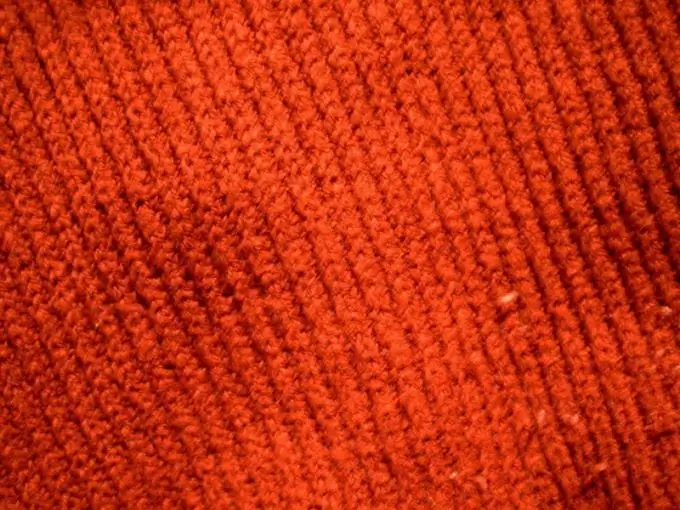Knitted skirts have not gone out of style for decades. And this is not surprising. This skirt is beautiful and practical. In addition, you can always reshape it into something even more modern if you suddenly get tired of it. To learn how to knit fashionable skirts, master the most common pattern. On its basis, you can always build something unusual.

It is necessary
- - woolen or semi-woolen yarn;
- - knitting needles on the line;
- - linen elastic or bodice tape.
Instructions
Step 1
The basis for modeling can be a short, almost straight skirt, tied from the waist. It can be made without a seam. Tie a belt. It is better to knit it across with a double elastic band. Type on the needles the number of loops twice as much as required by calculation. Work 1 row with 1x1 rib. In the next row, knit the front one over the front one, remove the back one, leaving the working thread in front of the loop. Tie a strip of the desired length. The loops can not be closed yet, but removed with an additional thread, tying it into a ring.
Step 2
Dial from the side "braids" loops according to the calculation. Close the work in a circle. Even a straight skirt actually flares a little, so sketch out the addition lines. You can distribute them in different ways. For example, divide the number of stitches by 4 so that the addition lines are in the middle of the front and back, as well as along the side seams. With this method, add loops between the waist and hip lines through a row, 2 loops along each line.
Step 3
Further actions depend on the width of the skirt. If you want to knit a fairly wide four-piece, continue adding stitches across the row all the way to the bottom. For a slightly flared skirt, it is enough to add 2 loops every 12-16 rows. A straight skirt is made with a flat cloth.
Step 4
Tie the skirt to a slightly shorter length. Now you can give free rein to your imagination. A heavily flared skirt can be decorated with crocheted lace along the bottom. The loops made on the knitting needles do not need to be closed. Knit the first row of stitches into these loops. Remember that crocheting is always a little tighter. So that the bottom of the skirt does not turn out to be tight, control the process and at regular intervals knit not one column, but two in a loop. But this may not be necessary if the skirt itself is dense enough.
Step 5
In the second row, knit groups of 2-3 stitches, alternating them with chains of 5-8 stitches over the next same group of stitches. In the third row, knit the stitches above the stitches, and in the arcs - the number of stitches equal to the number of air loops. Knit the last row with simple columns in each column of the previous row. If you make the lace wider and more puffy, you get a frill. Then, in the first row of strapping, you need to add a certain number of loops, knitting 2 columns in 1 loop, say, after 4 loops. The rest is done in the same way as in the first case.
Step 6
On a straight skirt, there may also be an oblique frill, going from the hip through the front to almost the bottom, and then back down the back. It can be crocheted or knitted separately. Crocheting is fundamentally no different from making lace for finishing the bottom. For knitting, measure the length of the frill. Cast on the required number of loops and knit a row with the front ones. and the second - purl. On the third row, add loops, knitting from one to three at regular intervals. If the threads are not very thick and at the same time soft, such a frill can be knitted with hosiery.
Step 7
You can make a frill and a mesh. For example, yarn over and knit the next 2 stitches together. In this way, alternate the pattern element to the end of the row. Knit even rows according to the pattern. The nets can be of a different type, if the yarns are done not for each odd one, but in 1, 5, 9, etc. The distance between the holes can also be different, then between the stitches knitted together and the next yarn, several knit stitches must be tied. Make sure the distances are the same.
Step 8
Openwork inserts look great on knitted skirts. They can also be performed in a circle. The main thing is to outline the place where such an insert will be, and choose a pattern that is convenient to knit on circular knitting needles. For example, the middle of the front and back parts can be made with dense knit, and openwork inserts can be knitted on the sides.
Step 9
At the end of the work, insert a rubber band or bodice into the belt. Close the loops and connect the ends of the belt together. You can also make it with a button or button fastener.






